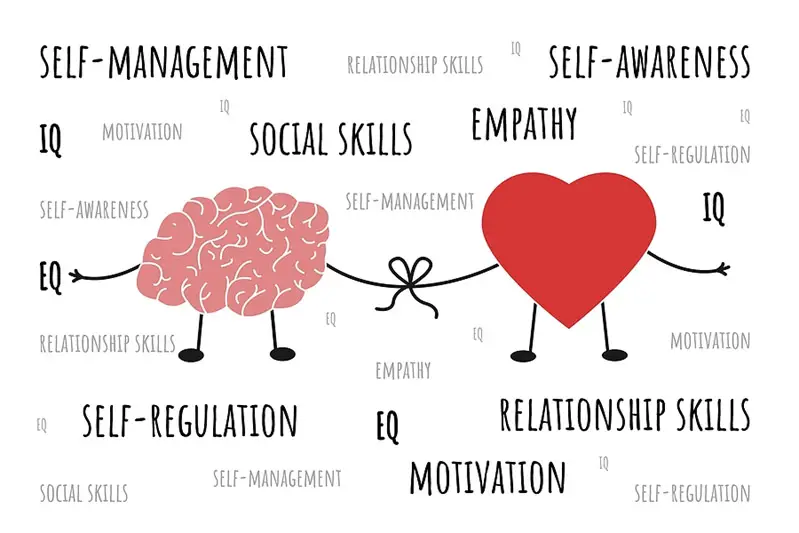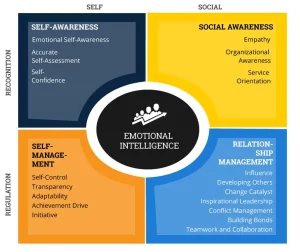
by admin | Mar 5, 2024 | Skills Gap Analysis
Make Time for Yourself: The Essentiality of Self-Care
In the hustle and bustle of modern life, it’s easy to get caught up in the endless cycle of responsibilities, deadlines, and social obligations. Amidst this whirlwind of activities, self-care often falls by the wayside, mistakenly labeled as a luxury or an act of selfishness. However, the reality couldn’t be further from the truth. Self-care is not just a mere indulgence; it’s a fundamental necessity for maintaining both mental and physical health. It’s about making a conscious effort to carve out time for activities that rejuvenate your mind and body, ensuring that you’re not just surviving, but thriving.
Understanding Self-Care
Self-care refers to the practice of taking an active role in protecting one’s own well-being and happiness, particularly during periods of stress. It embodies the simple yet profound idea that in order to take care of others, you must first take care of yourself. This concept goes beyond the basic physical needs and extends to maintaining one’s mental and emotional health.
Why Self-Care Is Essential
- Mental Health Maintenance: Regular self-care activities can significantly reduce stress, combat depression, and boost overall mood. It’s a way to reset and refresh your mental state, allowing you to tackle challenges with a clearer, more positive mindset.
- Physical Health Benefits: Many self-care practices, such as exercising, practicing yoga, or getting enough sleep, have direct physical health benefits. They can improve heart health, reduce the risk of chronic diseases, and enhance your overall physical well-being.
- Enhanced Productivity: Ironically, taking time out for self-care can actually make you more productive. By allowing yourself periods of relaxation and activities you enjoy, you can return to your responsibilities with increased focus, energy, and creativity.
- Better Relationships: When you’re well-rested and at peace with yourself, you’re more likely to have positive interactions with others. Self-care helps you become more patient, understanding, and kind, which can lead to stronger and healthier relationships.
How to Incorporate Self-Care into Your Life
Making time for self-care doesn’t have to involve grand gestures or lengthy time commitments. It’s about finding small, manageable ways to incorporate activities that make you feel good into your daily routine. Here are a few suggestions:
- Read a Book: Whether it’s fiction, non-fiction, or poetry, reading can be a great escape that stimulates your mind and sparks your imagination.
- Exercise Regularly: Physical activity is a proven stress reliever. Find something you enjoy, whether it’s yoga, running, or dancing, and make it a part of your routine.
- Pursue a Hobby: Engaging in hobbies you love can be incredibly rewarding and a great way to express yourself.
- Practice Mindfulness: Meditation, deep-breathing exercises, or simply spending time in nature can help center your thoughts and reduce anxiety.
- Connect with Loved Ones: Spending quality time with friends or family can provide emotional support and strengthen your bonds.
Final Thoughts
In conclusion, self-care is far from selfish; it’s a vital component of living a balanced and fulfilling life. By ensuring you carve out time for activities that rejuvenate your mind and body, you’re not only enhancing your own well-being but also enriching the lives of those around you. Remember, self-care is a necessity, not a luxury. Make it a priority, and watch how your life transforms.

by admin | Mar 5, 2024 | Job, Job Analysis, Skills Gap Analysis
Achieving Job Balance: Navigating Work and Life in Harmony
In an era where the lines between work and personal life increasingly blur, achieving job balance has become more crucial than ever. This elusive equilibrium not only enhances productivity and career satisfaction but also improves mental health and personal relationships. This blog explores the concept of job balance, why it’s essential, and practical strategies to navigate work and life in harmony.
Understanding Job Balance
Job balance is not merely about dividing hours between work and personal life; it’s about achieving a state where both aspects complement rather than compete with each other. It’s the ability to fulfill your professional responsibilities while having enough time and energy for personal interests and family. Achieving this balance leads to reduced stress, increased job satisfaction, and overall better quality of life.
The Importance of Job Balance
The significance of job balance cannot be overstated. Constantly tipping the scales towards work can lead to burnout, stress, and health issues. Conversely, neglecting professional responsibilities can result in career stagnation or financial instability. A balanced approach ensures sustained productivity, fosters creativity, and maintains physical and emotional well-being.
Strategies for Achieving Job Balance
1. Set Clear Boundaries: Establish clear limits between work and personal time. This might mean turning off work emails after a certain hour or dedicating weekends solely to family and leisure activities. Clear boundaries prevent work from seeping into every aspect of your life.
2. Prioritize Tasks : Not all tasks are created equal. Identify what’s urgent and important, and allocate your time accordingly. Learning to prioritize effectively can significantly reduce work-related stress and free up time for personal pursuits.
3. Learn to Say No: Overcommitting is a common trap. Be realistic about what you can handle, and don’t be afraid to say no to additional responsibilities if they threaten your ability to maintain balance.
4. Embrace Flexibility: The traditional 9-to-5 model doesn’t fit everyone. If possible, negotiate flexible working hours or remote work options with your employer. Flexibility can be key to balancing work demands with personal needs.
5. Make Time for Yourself: Self-care is not selfish; it’s necessary. Ensure you carve out time for activities that rejuvenate your mind and body, whether it’s reading, exercising, or pursuing a hobby.
6. Leverage Technology Wisely: Technology can be a double-edged sword. Use productivity tools to streamline your work, but be mindful of technology’s tendency to encroach on personal time. Set app limits and designate tech-free zones in your home to disconnect and recharge.
7. Communicate Your Needs: Open communication with your employer about your need for balance is crucial. Many organizations are recognizing the importance of work-life balance and may offer solutions like flexible schedules, mental health days, or support programs.
8. Evaluate and Adjust Regularly: Achieving job balance is an ongoing process. Regularly assess your work-life balance and make adjustments as needed. Life changes, and so will your balancing act.
Conclusion
Achieving job balance is essential for sustaining professional success and personal happiness. It requires conscious effort, clear boundaries, and continuous adjustment. By implementing these strategies, you can navigate the demands of work and life in harmony, leading to a more fulfilling and balanced existence. Remember, balance is not a final destination but a journey that requires constant navigation and adjustment.

by admin | Mar 5, 2024 | Study, Skills Gap Analysis
How to Reduce Stress at Work: Strategies for a Calmer Professional Life

In today’s fast-paced work environment, stress has become a common companion for many professionals. High levels of stress not only affect your productivity and job satisfaction but can also have serious implications on your health and well-being. Fortunately, there are effective strategies to manage and reduce stress at work. This blog explores practical steps you can take to create a more serene and enjoyable work experience.
1. Prioritize and Organize
One of the primary sources of work stress is the feeling of being overwhelmed by tasks. Prioritize your work by distinguishing between urgent and important tasks. Utilize tools and techniques such as to-do lists, digital planners, or the Eisenhower Box to manage your tasks more effectively. Organizing your work can significantly reduce stress by making your workload more manageable.
2.Set Realistic Goals
Setting achievable goals within realistic timeframes is crucial. Unrealistic expectations can lead to disappointment and increased stress. Break down larger projects into smaller, manageable tasks, and set clear milestones. Celebrate small achievements along the way to stay motivated.
3. Take Regular Breaks
Continuous work without breaks can lead to burnout and stress. Short, frequent breaks throughout the day can help clear your mind and improve focus. Techniques like the Pomodoro Technique, which involves working for 25 minutes followed by a 5-minute break, can enhance productivity while reducing stress.
4. Learn to Say No
Taking on more work than you can handle is a surefire way to increase stress. Learn to say no or delegate tasks when your plate is full. Being honest about your capacity for work will help maintain your mental health and ensure the quality of your work remains high.
5. Develop Healthy Responses
Instead of coping with stress through unhealthy habits like smoking or overeating, find healthier ways to manage stress. Exercise, meditation, and hobbies can be effective outlets. Activities such as yoga and mindfulness exercises can also help reduce stress levels significantly.
6. Establish Boundaries
In today’s digital world, it’s easy to feel like you’re always “on.” Establish clear boundaries between work and personal time. This might mean turning off email notifications after work hours or setting specific times when you are not available for work-related queries. Respecting these boundaries is crucial for stress reduction.
7. Improve Communication Skills
Effective communication can resolve many work-related stresses. Expressing your thoughts and concerns clearly, listening to others, and engaging in constructive feedback can improve your work relationships and reduce misunderstandings and conflicts.
8. Seek Support
Whether it’s from colleagues, friends, family, or mental health professionals, support is vital. Sharing your experiences and challenges can provide relief and offer new perspectives on managing stress. Many employers also offer wellness programs or counseling services as part of their benefits package.
9.Optimize Your Workspace
A cluttered, uncomfortable workspace can contribute to stress. Make your work area a pleasant, organized space. Personal touches like plants, photos, or ergonomic furniture can make a significant difference in your comfort and stress levels.
10. Practice Gratitude
Focusing on positive aspects of your work and life can shift your perspective on stress. Practicing gratitude by acknowledging things you’re thankful for in your professional life can foster a positive work environment and reduce stress.
Conclusion
While stress at work is common, it doesn’t have to be a defining feature of your professional life. By implementing these strategies, you can manage stress more effectively and create a healthier, more enjoyable work environment. Remember, taking care of your mental health is just as important as meeting deadlines and achieving professional success.

by admin | Mar 4, 2024 | Skills Gap Analysis
How to Build Effective Teamwork: A Comprehensive Guide
In the realm of successful organizations, teamwork is not just a buzzword—it’s the backbone of efficiency, innovation, and performance. Building a team that communicates well, collaborates effectively, and works towards common goals is crucial. This blog provides a step-by-step guide on how to cultivate a team environment that fosters unity, encourages engagement, and drives success.
1. Lay the Foundation with Clear Goals and Objectives
The first step in building a strong team is to establish clear, achievable goals and objectives. These should be aligned with the organization’s broader mission and vision. When every team member understands what they are working towards, it sets the stage for collective effort and purpose.
2. Define Roles and Responsibilities Clearly
Each team member should have a clear understanding of their specific roles and responsibilities. This clarity prevents overlap, ensures all necessary tasks are covered, and helps individuals feel valued and important to the team’s success.
3. Foster Open Communication
Open, honest communication is the lifeline of effective teamwork. Encourage an environment where feedback is given and received constructively, and where every voice is heard and respected. Utilize tools and technologies that facilitate seamless communication, such as instant messaging apps and project management software.
4. Cultivate Trust and Respect
Trust and respect among team members are fundamental to overcoming challenges and working collaboratively. Trust is built over time through reliability, transparency, and integrity. Respect is cultivated by valuing each other’s opinions, listening actively, and acknowledging the diversity of skills and perspectives each member brings to the table.
5. Encourage Collaboration and Participation
Promote a culture that values collaboration over competition. Encourage team members to share their knowledge, skills, and experiences. Brainstorming sessions, team meetings, and collaborative projects can all serve as platforms for collective problem-solving and creativity.
6. Leverage Individual Strengths
A team is as strong as its individual members. Identify and leverage the unique strengths and talents of each team member. This not only boosts the team’s performance but also increases individual engagement and satisfaction.
7. Set Up for Accountability
Create a culture of accountability where team members are responsible for their tasks and outcomes. Accountability frameworks, such as regular check-ins and progress reports, help keep everyone on track and reinforce the importance of individual contributions to the team’s objectives.
8. Offer Support and Resources
Ensure your team has the support and resources they need to succeed. This includes access to training, the right tools, and ongoing mentorship. A well-supported team is more motivated and capable of tackling challenges effectively.
9. Recognize and Reward Team Success
Acknowledging and rewarding the team’s achievements fosters a sense of accomplishment and appreciation. Celebrate milestones, whether through public recognition, rewards, or team events, to reinforce positive behaviors and outcomes.
10. Continuously Improve and Adapt
Team building is an ongoing process. Regularly solicit feedback from team members on what’s working and what can be improved. Be open to adapting strategies, processes, and roles to meet the evolving needs of the team and the organization.
Conclusion
Building effective teamwork is a deliberate and continuous effort that requires commitment from every team member, including leadership. By establishing clear goals, fostering open communication, leveraging individual strengths, and recognizing achievements, you can create a cohesive, collaborative, and high-performing team. Remember, the strength of a team lies not just in the skills of its members, but in their ability to work together towards a common goal.

by admin | Mar 4, 2024 | Study, Skills Gap Analysis

Time Management Apps and Tools: Enhance Your Productivity with Technology
In today’s fast-paced world, managing our time effectively has become more critical than ever. Fortunately, with the help of technology, there is a wide range of time management apps and tools available to assist us in organizing our tasks, prioritizing our activities, and maximizing our productivity. In this blog post, we’ll review some popular time management apps and tools on the market, highlighting their features and how they can help users better organize their time and tasks.
1. Todoist
Features:
– Todoist is a powerful task management app that allows users to create and organize tasks, set deadlines and priorities, and collaborate with team members.
– It offers various features such as project organization, recurring tasks, labels, and filters, making it easy to manage both personal and professional tasks.
– Todoist also integrates with popular productivity tools like Google Calendar, Dropbox, and Slack, providing seamless connectivity and workflow automation.
How it Enhances Productivity:
– Todoist’s intuitive interface and customizable features help users stay organized and focused on their goals, reducing overwhelm and procrastination.
– With its cross-platform availability and real-time sync, users can access their tasks and projects from anywhere, ensuring that nothing falls through the cracks.
– The app’s gamification elements, such as Karma points and productivity trends, motivate users to stay productive and maintain consistency in completing tasks.
2. Trello
Features:
– Trello is a visual collaboration tool that uses boards, lists, and cards to organize and prioritize tasks and projects.
– Users can create boards for different projects or workflows, add cards for individual tasks, and move cards across lists to track progress.
– Trello offers features like due dates, checklists, attachments, and comments, facilitating effective communication and task management within teams.
How it Enhances Productivity:
– Trello’s visual interface provides users with a clear overview of their tasks and projects, making it easier to prioritize and allocate time effectively.
– The app’s customizable workflows and automation capabilities enable users to streamline their processes and reduce manual effort, increasing efficiency.
– Trello’s integration with third-party apps like Google Drive, Slack, and Dropbox allows for seamless collaboration and information sharing, enhancing productivity across teams.
3. Forest
Features:
– Forest is a unique productivity app that helps users stay focused and avoid distractions by gamifying the Pomodoro Technique.
– Users plant virtual trees when they start a focused work session, and the tree grows while they remain focused. If they leave the app, the tree dies.
– Over time, users can grow a forest of trees representing their productive work sessions and track their progress over days, weeks, and months.
How it Enhances Productivity:
– Forest encourages users to stay focused and avoid distractions by rewarding them with a sense of accomplishment and a visually appealing virtual forest.
– The app’s gamification elements make the Pomodoro Technique more engaging and enjoyable, motivating users to maintain their focus and productivity.
– Forest also partners with real-world tree-planting organizations, so users can contribute to environmental causes while improving their time management skills.
Conclusion
Time management apps and tools offer valuable assistance in organizing our tasks, prioritizing our activities, and maximizing our productivity. Whether it’s managing tasks and projects with Todoist, visualizing workflows with Trello, or staying focused with Forest, there is a time management app or tool to suit every preference and workflow. By leveraging technology to enhance our time management skills, we can optimize our productivity, reduce stress, and achieve our goals more efficiently than ever before.

by admin | Mar 4, 2024 | Skills Gap Analysis, Job Analysis
The Foundations of Emotional Intelligence: Understanding the Four Pillars
Emotional Intelligence (EI) is a powerful tool that can greatly enhance how we interact with the world around us. At its core, EI involves understanding and managing our own emotions, as well as recognizing and influencing the emotions of others. This skillset is built upon four foundational pillars: self-awareness, self-management, social awareness, and relationship management. Each pillar plays a critical role in developing a well-rounded, emotionally intelligent individual. Let’s delve deeper into these core components.
1. Self-Awareness
Self-awareness is the cornerstone of emotional intelligence. It involves having a deep understanding of your own emotions, strengths, weaknesses, values, and motives. People with high self-awareness are conscious of their feelings in the moment and understand how their emotions can affect their thoughts and behaviors. This awareness is crucial for personal growth, as it allows individuals to recognize which areas of their life need improvement and to navigate their emotions effectively.
Strategies to Enhance Self-Awareness:
– Keep a journal to reflect on your daily emotions and reactions.
– Seek feedback from trusted friends or colleagues to gain different perspectives on your behavior.
2. Self-Management
Self-management, or self-regulation, refers to the ability to control and appropriately direct our emotions. It’s about expressing our feelings in suitable ways, managing our impulses, and adapting to changing circumstances. High self-management means being able to stay calm and clear-headed under stress, and it enables individuals to make thoughtful decisions without being overly influenced by their emotions.
Tips for Better Self-Management:
– Practice stress-reduction techniques, such as mindfulness or deep-breathing exercises.
– Set clear goals and standards for your behavior, and monitor your progress.
3. Social Awareness
Social awareness involves understanding and empathizing with the emotions of others. It’s about recognizing social cues, understanding the dynamics in a room, and being able to put oneself in someone else’s shoes. This pillar is crucial for building strong, healthy relationships, as it helps us to interact with others respectfully and compassionately.
Ways to Improve Social Awareness:
– Practice active listening and give your full attention to others when they speak.
– Observe body language and social cues to better understand how others are feeling.
4. Relationship Management
The final pillar, relationship management, is about using our awareness of our own emotions and those of others to navigate interactions successfully. It involves clear communication, effective conflict resolution, and the ability to inspire and influence others. Mastery of this pillar enables individuals to build and maintain healthy relationships, both personally and professionally.
Techniques for Effective Relationship Management:
– Develop your communication skills, focusing on clarity, empathy, and active listening.
– Learn conflict resolution strategies that emphasize collaboration and understanding.
Conclusion
Emotional Intelligence is not an innate talent but a set of skills that can be developed over time. By focusing on these four pillars—self-awareness, self-management, social awareness, and relationship management—individuals can enhance their ability to understand and manage their emotions, relate better to others, and navigate the complexities of social interactions. Whether in personal life or in the workplace, a strong foundation in emotional intelligence can lead to more fulfilling and successful relationships and outcomes. As we continue to recognize the value of these emotional skills, we open ourselves up to growth, understanding, and a more connected way of living.








